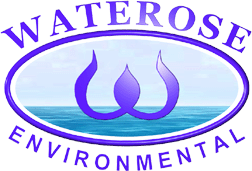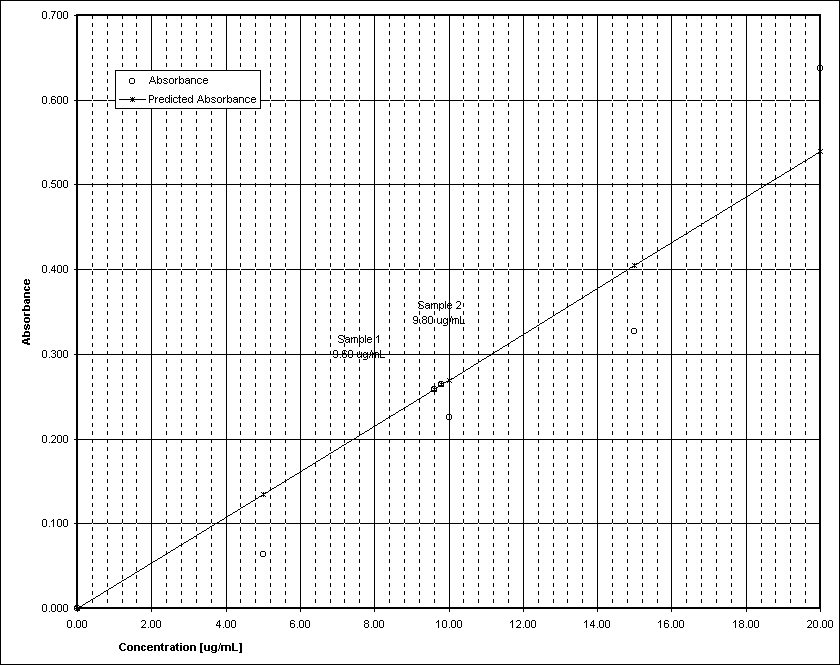Atomic Absorbance Analysis of Chromated Copper Arsenic Pressure Treated Wood Polesby WateroseIndex:
Figures:The concentration of copper in sawdust wood samples obtained from chromated copper arsenic pressure treated utility poles was determined by atomic absorbance analysis with a flame burner. The wood sawdust samples contained an average of 2340 m g of copper per gram of sawdust. chromated copper arsenic pressure treated utility pole, atomic absorption spectrophotometer, wood preservation The treatment of wood products enhances the longevity and usefulness of wood products. Wood treatment can be subdivided into two primary types: wood preservation against decay, insects and marine invertebrates; and wood protection against the growth of staining organisms (Environment Canada, Atlantic 1997). There are three broad classes of wood preservatives: pentachlorophenol used for utility poles, crossarms and glue-laminated beams; creosote used for timbers in railroad ties, bridges, highway posts, marine bulkheads, docks, and seawalls; and water-borne preservatives including chromated copper arsenate (CCA), ammonical copper Quat (ACQ), and ammonical copper zinc arsenate (ACZA) used in residential decks, playgrounds, fences, highways, utility poles, and walls (American Wood, 1997). The pentachlorophenol and creosote treatments are used for heavy duty wood preservation (Environment Canada, Pacific 1997). The benefits of using heavy duty wood preservation include the prevention of decay by micro-organisms, fungi, insects, and weathering [(Environment Canada, Atlantic 1997), (American Wood, 1997)]. The longevity of the treated wood products reduces replacement costs of structures and consumption of timber (Environment Canada, Atlantic 1997). The wood products are from forests which are considered a renewable resource. Wood products are versatile to handle and economical compared to alternatives such as steel or concrete (American Wood, 1997) . The disadvantages of using heavy duty wood preservatives include the introduction of hazardous toxic substances that cause serious environmental degradation and harm to ecosystems [(Environment Canada, Atlantic 1997), (Environment Canada, Pacific 1997)]. More specifically, creosote contains polynuclear aromatic hydrocarbons (PAH’s) which are persistent in the environment and can be carcinogenic and mutagenic (Environment Canada, Pacific 1997). Two wood treatment sites that used creosote were closed in the 1980’s due to contamination from the production process and the storage facility; the Newcastle and Truro sites in the Atlantic Region warranted remediation (Environment Canada, Atlantic 1997). More recent studies in British Columbia have revealed that creosote treated wood structures are a potential source of dioxin/furan releases to the aquatic environment from runoff (Environment Canada, Pacific 1997). Wood preservation with pentachlorophenol has been banned in Canada since December 30,1990 (Environment Canada, Atlantic 1997) because it is persistent in the environment, bioaccumulates in fish tissue, and is highly toxic to aquatic organisms 1990 (Environment Canada, Atlantic 1997). Pentachlorophenol volatises from treated wood and is highly toxic to humans (Morgan 1997). The third class of wood preservatives is the water-borne preservatives including chromated copper arsenate (CCA), ammonical copper Quat (ACQ), and ammonical copper zinc arsenate (ACZA) (American Wood, 1997). This class of wood preservatives is distinguished from the previous two classes of wood preservatives because it is not considered a heavy duty preservative, it is commonly used in residential applications, and it is now used extensively by the wood preservation industry in the Atlantic Region of Canada (Environment Canada, Atlantic 1997). The benefits of using arsenate preserved wood are similar to those advantages previously described, and in addition, arsenate treated wood products are more aesthetically pleasing and considered less harmful than the preceding two classes of wood preservatives. The American Wood Preservers Association claims that CCA preserved woods are safe and do not pose a threat to the environment or to humans when used in accordance with the safety regulations (American Wood, 1997) . Conversely, there is evidence in Canada that run-off from wood preservation plants using CCA can lead to water contamination from copper, chromium, and arsenic (Environment Canada, Atlantic 1997). The highest concentrations were found in the drying areas and storage areas of CCA wood treatment plants (Environment Canada, Atlantic 1997). The high concentrations found were 10.9 mg/g arsenic, 61.9 mg/g copper, PAH’s [from creosote] more than 7.0 mg/g, and pentachlorophenols at 0.3 mg/g (Environment Canada, Atlantic 1997). This experiment examined the concentration of copper in a sample of sawdust from a chromated copper arsenic pressure treated telephone pole. Copper can enter surface soils from treated poles, during or after the treating process. Copper is strongly adsorbed to soil particles where it is immobilised under high pH conditions; however, under low pH conditions, the copper is oxidised into a soluble form and transported by water in the environment (Dodd October 30). Naturally occurring levels of copper are not harmful to the environment or to animals. Conversely, chronic exposure to excessive amounts of copper can cause liver and brain damage in animals (Dodd October 30), hence it is important to monitor the concentration of copper in the environment. There are three other primary concerns about contamination from wood treatment plants including environmental contamination from the use of treated wood products, occupational exposure and use-related health hazards attributed to the use of wood preservation chemicals (Environment Canada, Atlantic 1997). The objectives were to determine the concentration by weight of copper in two sawdust wood samples from copper and arsenic pressure treated utility poles by means of sample preparation, acid digestion and atomic absorption in a flame burner type spectrophotometer. All materials and methods used are as described in the Environmental Science Lab Manual, 1997 for "Experiment 6: Copper and Arsenic in Treated Wood". (Royal Roads 1997) The determination of the concentration of arsenic was excluded from the methods described in Experiment 6. The results of the atomic absorption spectrophotometer (AAS) analysis of the samples and the standards are plotted on Figure 1. The concentration of copper in the samples is 9.60 m g/mL and 9.80 m g/mL with an average concentration of 9.70 m g/mL. The concentration by weight of copper in the samples is 2410 m g/g and 2380 m g/g with an average concentration of 2340 m g/g. Figure 1. Concentration of Copper in Wood Samples by Atomic Absorbance Spectrophotometer
The calculations to determine the concentration of copper in the wood samples were determined by linear regression analysis of the calibration curve. The sample calculation to determine the concentration of copper in the treated wood sample #1 is: Figure 2. Sample Caluclation to Determine Concentration of Copper
Sources of Error and Precision: The experimental results of the atomic absorption spectrophotometric analysis were within the recommended detection range for vaporisation of copper by flame type AA burner, of 0.02 - 10.00 m g/mL (Dodd October 24,1997). The first experimental result for the standard solution of copper of 25 m g/mL was 0.634 m g/mL which was less than the first experimental result for the prepared standard solution of copper at 20 m g/mL. Additional readings were obtained for the prepared standard solutions of 15, 20, and 25 m g/mL. The second set of results confirmed that the standard solution of 25 m g/mL had a concentration of copper that was approximately equivalent to the standard solution of 20 m g/mL. It is likely that this standard is 20 m g/mL rather than 25 m g/mL. It was noted that during the preparation of the 25.0 m g/mL standard solution, there was an interruption that may account for the missing 5 m g/mL. Based on the initial readings, secondary readings, and procedural recall, the absorbance readings for the 25 m g/mL copper solution standard were averaged with the absorbance readings for the 20 m g/mL. If the 25 m g/mL were not averaged with the 20 m g/mL, then the calibration curve would be negatively skewed for interpolation of the concentration of copper in the two sample preparations; the decreased slope, would result in a lower coefficient of variation, which would yield higher concentration interpolations than are true. In addition, the set of absorption readings for 15 m g/mL are averaged for calculation of the calibration curve. The averaging of the readings does not skew the results, but rather increases the likelihood of increasing the accuracy of the interpolation results. It was observed that during the atomic absorption analysis, there were significant bursts of yellow flame when the two samples were injected. These bursts of flame indicate that there were impurities in the matrix, or other substances that could skew the absorption readings, either positive or negative. This would reduce the accuracy of the absorbance reading. While the absorbance results were within the recommended detection limits, the results were near the maximum recommended range. The higher concentration near the maximum limits can cause a greater deviation in the calibration curve due to higher defraction and deflection off the larger number of molecules in the flame chamber that reduce the accuracy of the detector results. The preparation of the standard solutions had multi-step additions of copper to the acid/water solution. Each multi-step addition of copper stock solution to a standard solution increases the error or margin for precision. For example, the preparation of 5 m g/mL included one 0.500 mL addition of copper stock solution whereas the preparation of 25 m g/mL included two additions of 1.000 mL of copper stock solution, and one addition of 0.500 mL of copper stock solution [which was inadvertently omitted from the procedure]. Each addition of copper standard solution had a precision of +/- .001 mL associated with the micro-pipette, thus for the multi-step preparation of the standard solution, there is a wider margin of error for the amount of copper added. The wider margin would increase the deviation of the calibration curve, and decrease the accuracy of the interpolated concentration of copper in the samples. The initial mass measurement of the sawdust samples had a two step weight analysis, the weight of the dish and sawdust combined, and the weight of the dish. If the recorded weight of the sample is less than the actual weight, then the concentration of the copper by weight would be higher than actual concentration. If the recorded weight of the sample is higher than the actual weight, then the concentration of the copper by weight would be less than the actual concentration. The preparation of the copper samples included the oxidation of the copper by acid digestion. The samples were digested for 20 minutes. It is possible that not all of the copper was oxidised. If a portion of the copper was not oxidized, then the concentration of the sample solution would be less than the concentration of copper in the wood sample. The lower concentration of the copper in solution would result in lower atomic absorbance readings, which in turn would negatively skew the calibration curve, which would in turn produce higher interpolation values for the copper in the sample solutions. Discussion on Results: The two samples had an average concentration by weight of 2340 m g copper per gram of sawdust, or equivalently an average concentration of 9.70 m g/mL. The chromated copper arsenic pressure treated telephone poles had high concentrations of copper. The average concentration of copper in Canadian soils is 50 ppm (Dodd, October 30) . Copper in soils would remain immobilised unless it is exposed to highly acidic conditions when it is oxidised to Copper (II) which is soluble in water and thus more mobile in the environment (Dodd, October 30) . Once excess amounts of soluble copper are introduced into the water table, it can enter the drinking water supply. High concentrations of copper in drinking water can impair human health, cause liver and kidney damage and even death (Agency, 1990). The average concentration of copper in drinking tap water ranges from 20-75 ppb, the maximum limit set by the Environmental Protection Agency is 1.3 ppm (Agency, 1990) . Studies in Canada of wood treatment plants, such as Truro and Newcastle discussed in the introduction, have demonstrated evidence of higher concentrations of copper in the wood treatment processing area, wood drying area and wood storage area. While treatment of wood with CCA may be less dangerous than treatment with creosote or pentachlorophenol, it is potentially hazardous if levels of mobile copper in the environment exceed safe levels. In addition to the concerns regarding direct contamination of the environment and threat to human health, there are the additional concerns regards potential environmental contamination from the use of treated wood products, occupational exposure, and use-related health hazards (Environment Canada, Atlantic 1997) . The use of wood preserved products has significant advantages because the wood is preserved longer against rot, decay, insects, and marine invertebrates. In addition the cost of replacing structures is reduced and fewer new timbers are consumed from a renewable resource. It is preferable to use a renewable resource such as forest timber than to use steel, concrete or other expensive construction alternatives manufactured from non-renewable resources. The wood preservation industry has adapted to changes in environmental protection standards. If the wood preservation industry develops new and innovative methods of production, drying, storage, and sealing of the treated wood products, then the use of treated wood products may be viable with minimal environmental degradation and harm to human health. Agency for Toxic Substances and Disease Registry. "Public Health Statement: Copper (1990)". Internet. Available at: http://atsdr1.atsdr.cdc.gov:8080/ToxProfiles/phs9008.html. American Wood Preservers Association. "Frequently Asked Questions About Treated Wood". Internet. Available at: http://www.awpi.org/oaq-a.html. "Consumer Information Sheets: Inorganic Arsenical Pressure-Treated Wood (Including CCA, ACA, and ACZA)". Internet. Available at: http://www.awpi.org/oaq-a.html. Department of Environmental Science. 1997. Laboratory Manual. pp. 6-1 to 6-2. Royal Roads University, Victoria, B.C. Dodd, Dr. M. Royal Roads University. Victoria, B.C. "Atomic Absorption Spectroscopy". Lecture. October 24, 1997. "Sources, Reactions, Transport, Fate and Effects of Metals - Copper". Lecture. October 30, 1997. Environment Canada. Atlantic Region. "Wood Treatment". Internet. Available at: http://www.ns.ec.gc.ca/soe/ch4-46.html. "Wood Treatment - Other Environmental Concerns". Internet. Available at: http://www.ns.ec.gc.ca/cgi-bin/pr...oe/ch4-47.html Environment Canada. Pacific & Yukon Region. "Treated Wood as a source of Dioxin/Furan Releases". Available at: http://yvrwww1.pwc.bc.doe.ca/ep/programs/eppy/pest/ptwsd.html. Morgan,P.D. PhD. "Pentachlorophenol: Toxicology". Internet. Available at: http://hammock.ifas.ufl.edu/txt/fairs/15484. Please be aware that this is a student level lab and has not been peer reviewed by a professional journal. Please refer to primary journal publications for additional information for your research. Student labs are my favourite part of learning because each is a prototype mini-project with multiple stages in: planning, doing, analysing, and writing.
| |||||||||||||||||||||||||||||



 email Waterose
email Waterose
